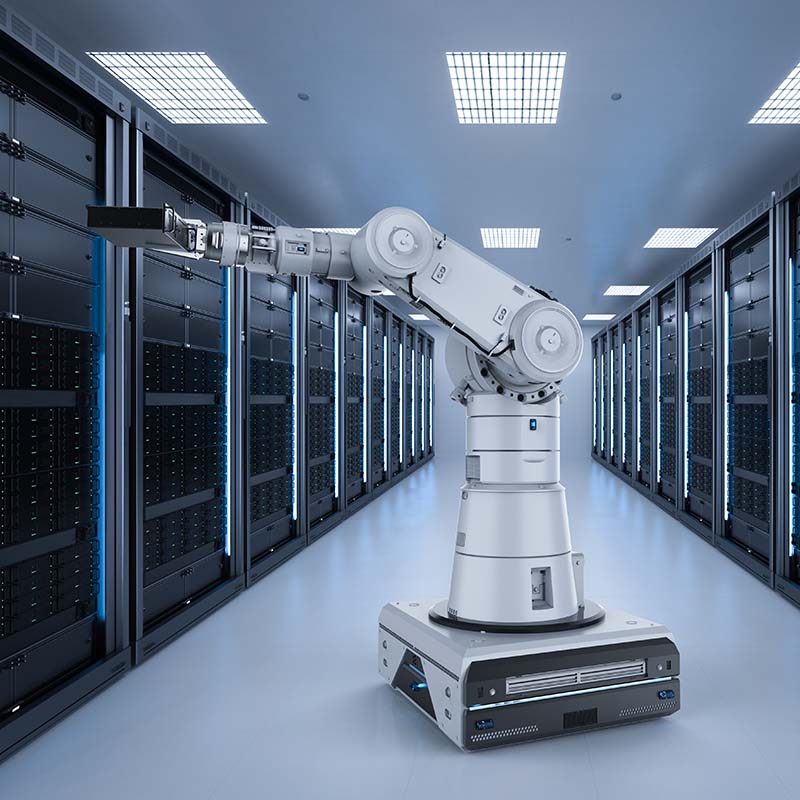Skyrocketing digital transformation demands and compounding interest in application development, edge computing and emerging artificial intelligence capabilities are putting immense pressure on CIOs to manage IT operations and onboard new capabilities in a cost-effective, sustainable way. That pressure is driving them to rethink strategies in order to get the most bang from their budget in the years ahead. All of this is in light of so many other daunting challenges like shift-to-public-cloud mandates, maintaining capabilities brought on to survive the COVID pandemic and managing major disruption from IT vendors that get acquired or go out of business.
The New York Times recently reported that with continued growth in a remote workforce and more high-speed streaming content are pushing more data to and through public cloud services, leading to soaring demand for building more data centers.
But there’s a lot more going on, according to Lee Caswell, senior vice president of Product and Solutions Marketing at Nutanix.
“In the coming years, there will be hundreds of millions of applications created, which will generate unprecedented amounts of data,” he said.
Add to that the advent of Generative AI, which is already putting more pressure on private and public data centers, according to IT experts.
“The biggest thing I'm asking most about right now is the impact of AI on IT operations,” Steve McDowell, principal analyst at NAND Research, told The Forecast in May 2023.
“There's a lot of hype around AI, and that impacts IT. [They] need to figure out how to build the infrastructure to support it because traditional compute does not account for it. We're seeing thousands of experiments across organizations, and IT has to step up and support those often in short order, so it's a challenge operationally.”
As an industry standard, data centers already consume about 1.5% of global power, so Chatha imagines that energy consumption will be a major concern for companies onboarding AI applications, according to Harmail Chatha, senior director of cloud operations at Nutanix.
“The wave of AI from an infrastructure perspective is gonna be tremendous,” said Chatha.
He said AI and machine learning (ML) workloads consume a lot of IT resources, so IT teams need to be strategic about the infrastructure needed to run applications and manage data.
“AI is going to require a lot more (electric) power, more real estate,” said Chatha. “It’s gonna grow and continue to grow. It will have a huge impact on data centers and sustainability.”
Without hardware innovations like quantum computing, AI "is going to burn the world by consuming intolerable levels of energy," said Enrique Lizaso Olmos, CEO of Multiverse Computing, in the Quantum Insider.
While it’s still very early days of enterprise AI deployment, many in the IT industry see the need to find the right balance of private data centers and rented infrastructure, according to a Silicon Angle article AI Model Training Rekindles Interest in On-Premises Infrastructure.
“As the volume and complexity of the [AI] data grows, keeping that data within company infrastructure becomes more cost-effective to run training against,” Chris Gladwin, chief executive of hyperscale data warehouse and analytics startup Ocient Inc told Silicon Angle.
The State of Enterprise AI
“We’re still in the very early stages of how we’re going to use AI,” McDowell said.
But the 2023 Nutanix State of Enterprise AI Report, based on input from over 650 IT, DevOps and platform engineering decision makers, revealed the immense impact AI is already having on IT strategies and resources. It showed a high concern for data security and reliability, and worry about the infrastructure and skills required to onboard and scale new AI capabilities.
Some key findings include:
- 90% consider AI a priority
- 92% expect IT costs to increase due to AI applications and services
- 85% plan to increase investments to modernize IT infrastructure over the next 1-3 years to support AI workloads
- 84% plan to increase investments to expand their data science and engineering teams
- 90% say security and reliability are important considerations in their AI strategy
“It's probably simultaneously exciting and terrifying to be a data center manager right now,” Greg Diamos, a machine learning systems builder and AI expert, told The Forecast. “You don't have enough compute in your data center, no matter who you are.”
Investing in AI
The Enterprise Architect’s Guide to Conversational AI by Moveworks explained common ways businesses will utilize AI, including:
- Application Management Systems – Managing, monitoring, and maintaining software solutions throughout their entire lifecycle
- Customer Relationship Management (CRM) Systems – Tools and services for managing and tracking interactions and exchanges with customers
- IT Operations – Practices and solutions for upkeeping and maintaining one’s IT infrastructure and networking operations
- HR Platforms – Workforce management systems that aid with employee recruitment and retention, benefits administration, payroll, and other functions
- Marketing Systems – Processes and utilities that organizations can tap into to better plan, execute, and analyze marketing and advertising efforts
- And that’s before you consider yet more practical applications for AI and machine learning technology such as facilitating team collaboration, assisting with cybersecurity and IT management, or facilitating procurement processes and financial transactions. Small wonder that analysts at Ernst & Young note that AI-driven applications, including underlying computing and storage requirements, are positioned to drive the next phase of data center industry growth
These kinds of Generative AI applications could boost global labor productivity by more than 1 percentage point each year following widespread adoption, according to a 2023 report by economists at Goldman Sachs.
“But for large-scale transformation to happen, businesses will need to make a significant upfront investment in physical, digital, and human capital to acquire and implement new technologies and reshape business processes,” wrote Goldman Sack’s Joseph Briggs and Devesh Kodnani.
“Those investments, which could amount to around $200 billion globally by 2025, will probably happen before adoption and efficiency gains start driving major gains in productivity.”
Editor’s note: Learn more about the Nutanix platform for AI, including Nutanix GPT-in-a-Box, a full-stack software-defined AI-ready platform designed to simplify and jump-start your initiatives from edge to core.
Ken Kaplan is Editor in Chief for The Forecast by Nutanix. Find him on X @kenekaplan.
© 2024 Nutanix, Inc. All rights reserved. For additional legal information, please go here.





